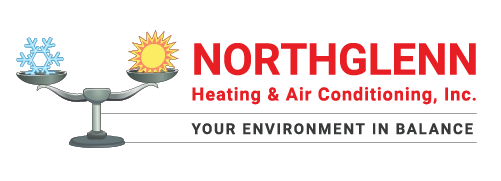
A furnace is usually a background player for your home, ensuring you're warm in the cold winter months. It regularly won't be noticed until a malfunction appears.
One root cause may be that your furnace has a cracked heat exchanger. It can potentially be hazardous, so it’s worthwhile to learn the evidence of a cracked heat exchanger and what you can do if you suspect that is the problem.
What Is a Heat Exchanger in a Furnace?
A heat exchanger transfers heat from the combustion chamber inside your furnace to the air that circulates inside the air ducts. It usually accomplishes this with coils or tubes that heat up the air while acting as a barrier to keep gas formed in the combustion chamber, called flue gasses, from escaping out into your home.
Is a Cracked Heat Exchanger Dangerous?
Because of its important role, it shouldn't come as a surprise that a broken heat exchanger can be very dangerous. A damaged heat exchanger can allow dangerous gasses – such as carbon monoxide, which can be lethal – to circulate throughout your home.
For this reason, never turn on your heater if you believe you're dealing with a cracked heat exchanger, as letting it run could make the whole household sick. Contact an HVAC professional right away if you are worried your heater has a cracked heat exchanger that needs to be repaired.
Four Signs of a Cracked Heat Exchanger:
- Furnace switches off: Cracks in the heat exchanger may cause your furnace to turn off.
- Odd Smells: If the air leaving your furnace has a powerful chemical smell, it could be evidence gas is seeping through cracks in your heat exchanger. These byproducts, which may smell like formaldehyde, are a major warning sign.
- Carbon monoxide alarm initiates or you recognize health problems: If a cracked heat exchanger is relieving carbon monoxide into your home, your carbon monoxide alarm may go off or household members may experience signs of carbon monoxide poisoning. Symptoms include headaches, dizziness, weakness, nausea, vomiting or feeling tired. If the alarm goes off or you feel unwell, get out of the home immediately and then call for help.
- Soot: If you notice black sooty buildup on the exterior of your furnace, it’s more evidence something could be seriously wrong.
What to Do if a Furnace Heat Exchanger is Cracked
If you worry your furnace has a cracked heat exchanger, call a pro with extensive experience in furnace installation Northglenn right away so they can inspect your system and, if required, perform a furnace heat exchanger replacement. Costs will vary depending on the situation, but estimates run in the neighborhood of $1,000 to $3,000.
Estimates aside, the good news is that heat exchangers are often covered by the warranty. It's a good idea to confirm the warranty paperwork on your furnace, as while the warranty might not cover the entire cost of repairs, it can significantly shrink your bill.
How to Avoid a Cracked Heat Exchanger in Your Home
One of the easiest ways to prevent a problem in your furnace overall is via regular furnace maintenance. Furnaces offer the most benefits when they run efficiently. Hiring a trained professional to examine your furnace for broken-down parts, dirty filters and other common problems can keep you from getting a big bill later on.
It’s also beneficial to inspect your furnace filters every few months – it’s recommended some filters be swapped out every 90 days or sooner if they are dirty or grimy. While the filters aren't a part of the heat exchanger itself, the strain of dragging air through a clogged filter makes your entire furnace work more vigorously to do its job. And the harder your furnace needs to run, the more strain parts like the heat exchanger will endure.
